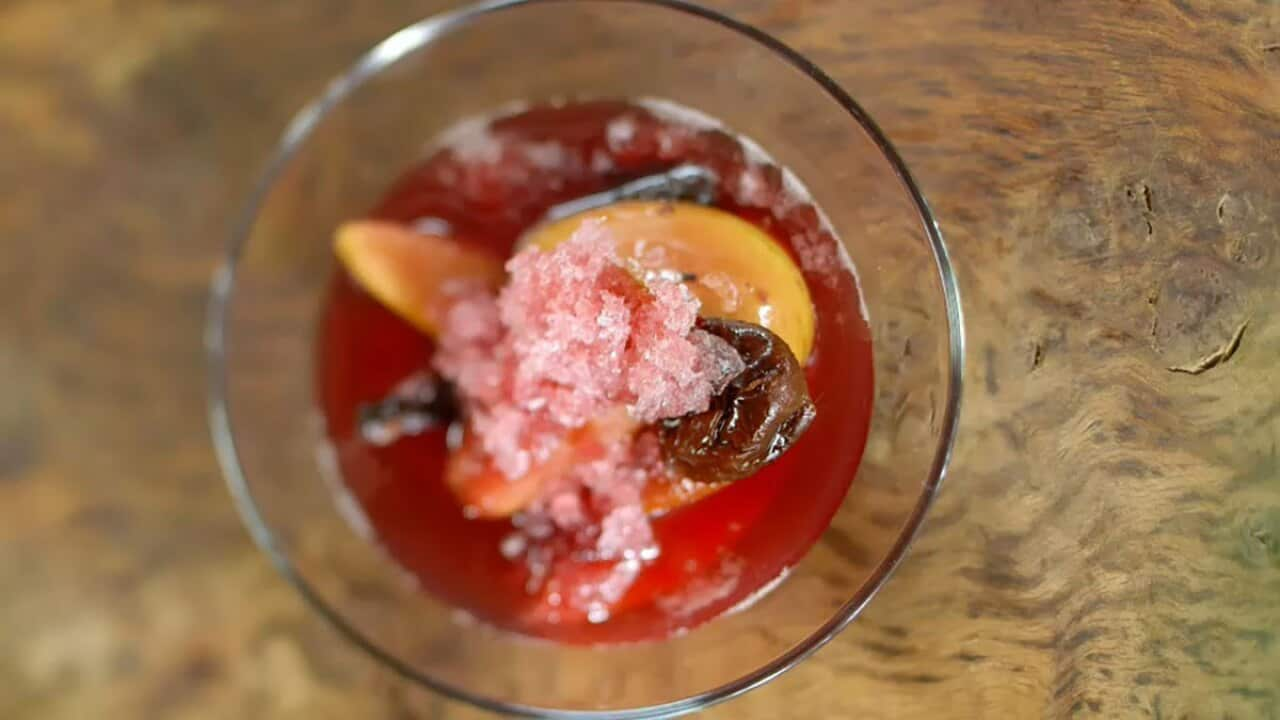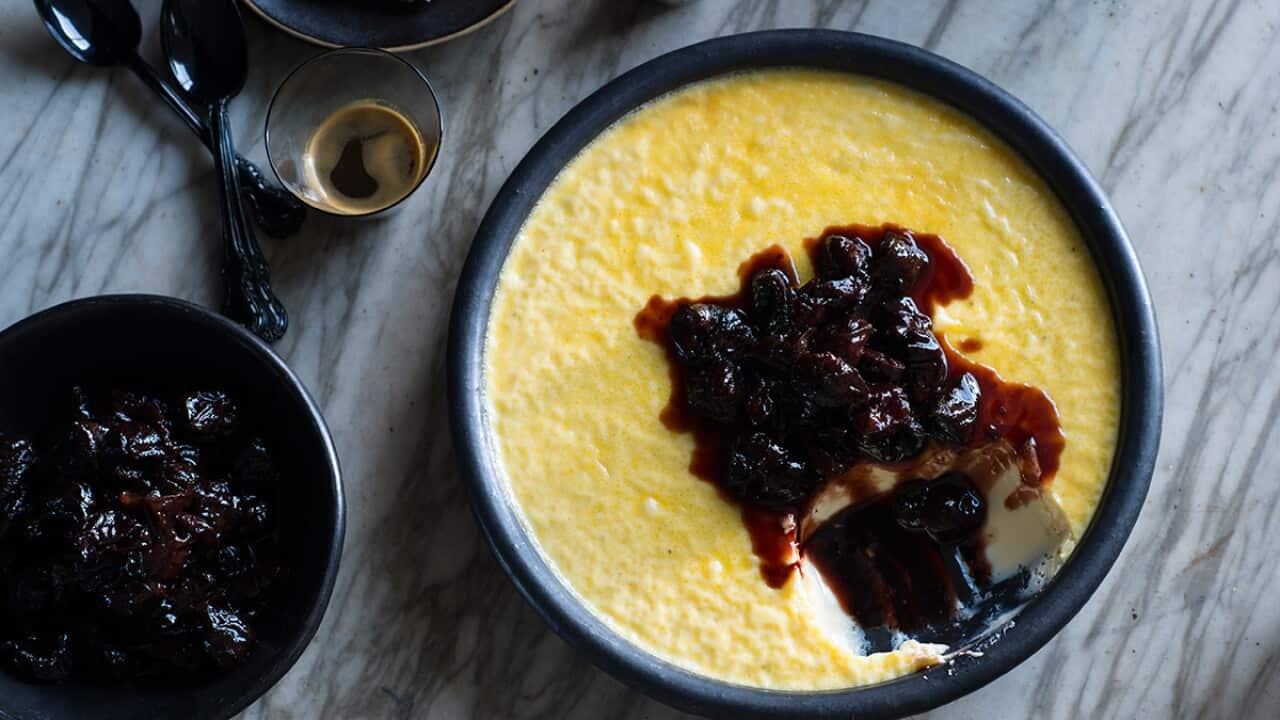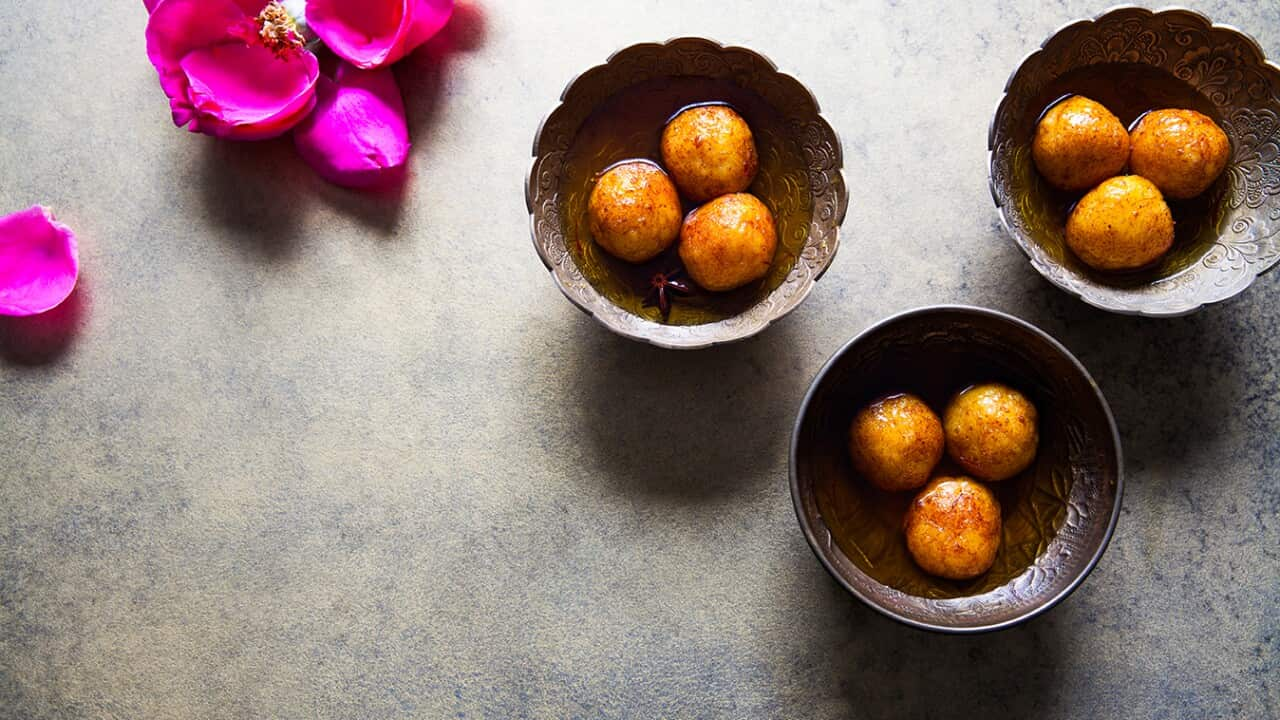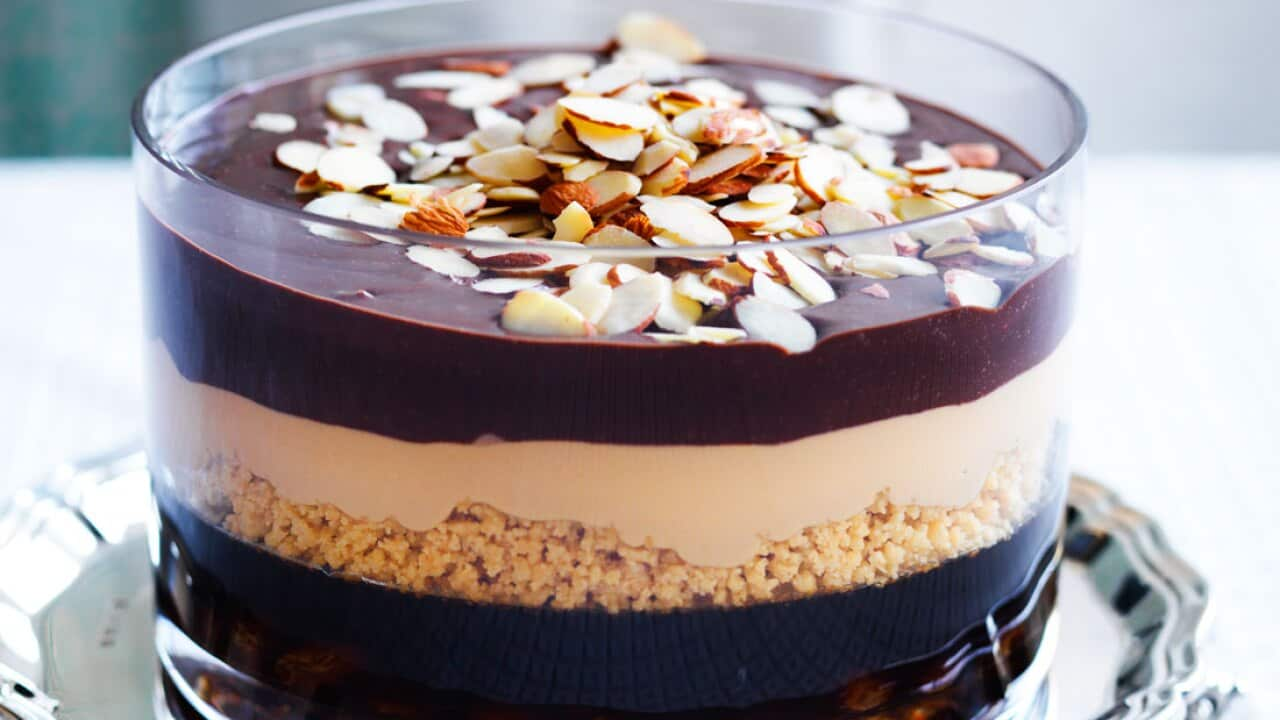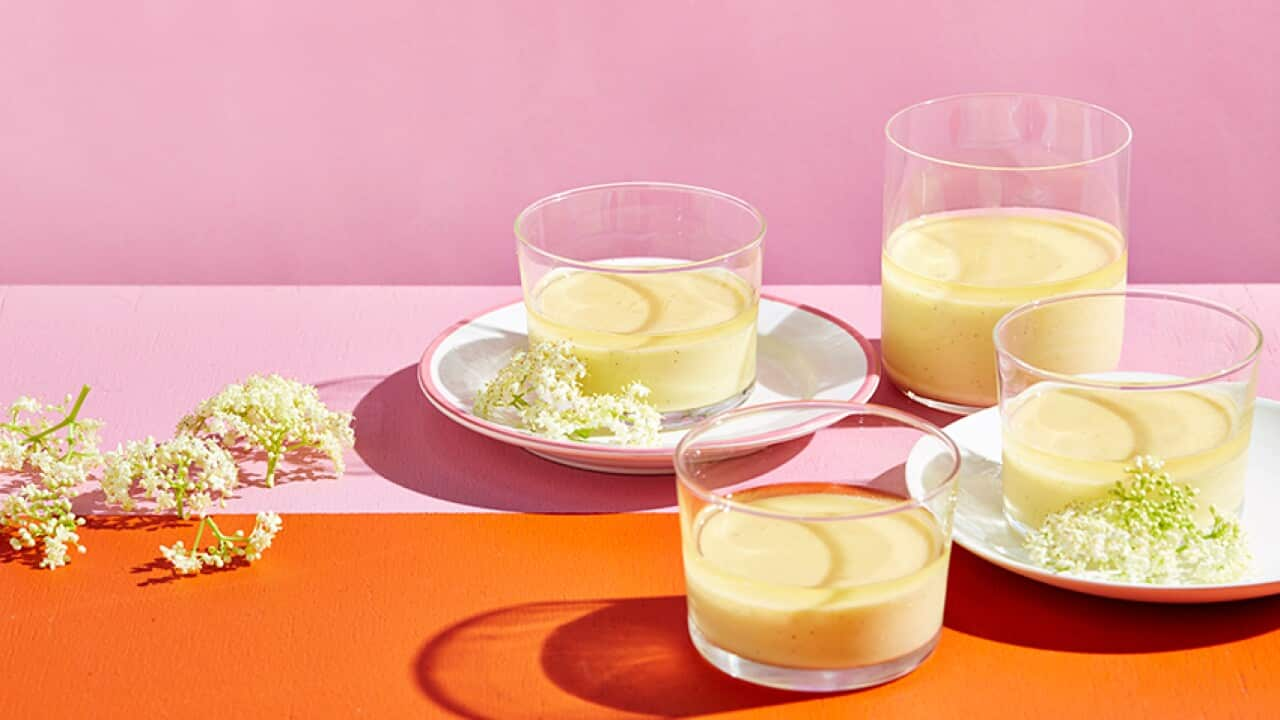

5 min read
This article is more than 7 years old
Make a better trifle
Trifle: a cornerstone of Christmas celebrations. But if you find this behemoth of a dessert intimidating, don't worry! We've got just the guide for you.
Published 13 December 2017 10:00am
Updated 15 December 2021 4:08am
By SBS Food
Source: SBS
Image: Turkish delight trifle (Alan Benson)
The sponge
Because trifle has so many wet components - jelly, fruit, booze, custard - it’s incredibly important that there’s an absorbent skeleton underneath to provide structural integrity.
The has been a classic for a reason - the soft, open crumb allows each bite to melt in your mouth, without the fragility of the sponge finger (another popular choice).
If you’re planning to load your trifle up with liquid - we all know that the booze hand can get a bit out of control - then definitely aim for something more substantial. The trad choice is a or instead of a sponge.
For something left of field, we advocate: , , and , and if you’re feeling adventurous, why not try a , a , or even , instead?
READ MORE

Upside-down caramel banana bread
The fruit
This should be where the bulk of your sweetness is coming from.
Yes, there is no lack of added sugar - it is a dessert after all - but the secret to preventing a saccharine disaster is to draw from the freshness of seasonal fruit.
If you like, you can enhance the fruit further by poaching it, macerating it, or infusing it with different flavours.
READ MORE

Cumquat-scented trifle
The booze
There’s usually an element of booze in classic trifle recipes - port and sherry are very popular - but this serves to moisten and flavour the sponge, rather than to actually get the diner absolutely toasted.
With that in mind, why not try different liquids - rosewater can provide floral notes to a , a gin syrup for a gin and tonic trifle, or even different unsweetened teas to balance out the other elements.
Bonus points: using non-alcoholic liquids means the younger members of the family can enjoy this treat too!
READ MORE

Ume juice
The jelly
Nope, I don’t want to hear about how jelly is for children. It’s historical, and if it’s good enough for Jamie Oliver, Maggie Beer and Gordon Ramsay, then it’s good enough for us.
Whether jelly conjures up images of fancy or fear for you, you cannot deny that it adds another layer of texture and contrast to this majestic bowl of dessert.
Depending on what flavour you choose, it may be the gateway to your dessert adulthood. Try fruity flavours like , , and , or get fancy with , marsala or jellies. Whatever the case may be, never turn your nose up at another way to add one more voice to this festive choir.
The custard
Made with eggs, milk (or cream) and sugar, the custard’s role in a trifle is to provide a velvety, rich blanket to bring the other elements together. Whether you like it soft or firm, the only thing custard cannot be is watery. So why stop at a traditional custard? Try , , or even a !
READ MORE

Mango custard vanilla slice
The crunch
Maybe it’s not traditional, but in the name of contrast and texture, you might consider a layer of crunch. are a popular choice, but you can use a wide range of , , , … and if you’re feeling particularly creative, . Yes, meat in your trifle. Rachel Green would be proud.
READ MORE

Danish macaroons (makroner)
Layers, layers, layers - because gravity is your friend
Sure, there have been trifles made with a single layer of each, but if you’re using particularly juicy fruit, then you might want to consider layering your trifle up like a lasagne.
Think about it this way - all the excess moisture is going to travel downwards and pool in the bottom of the dish, possibly making your base layer of sponge soggy.
If you’re planning to use a bounty of summer fruit and a soft custard on your trifle, then layers of sponge in the middle sections of the trifle would help prevent your holiday dessert from becoming a spectacular pile of mush.
Just remember to start with a layer of sponge and end with a layer of softly whipped cream - everything else in between is your creative oyster world.
Time to dig in! All the recipes.
Ultimately, a good trifle is all about balance. With so many elements involved, it can be so easy to get carried away with one thing and forget another. If you’re unsure if flavours would go well together, it’s always a good idea to make small batches ahead of time and test it out to see if you like it.
(Tip: If you have a really picky bunch of eaters, why not make dessert time a trifle party instead? Have all the elements laid out on a table with single-serve glasses, and everyone can assemble their own.)
As with any party cooking, embrace your creativity! And if you don’t know where to start, why not try these creative trifle recipes to get you inspired:




